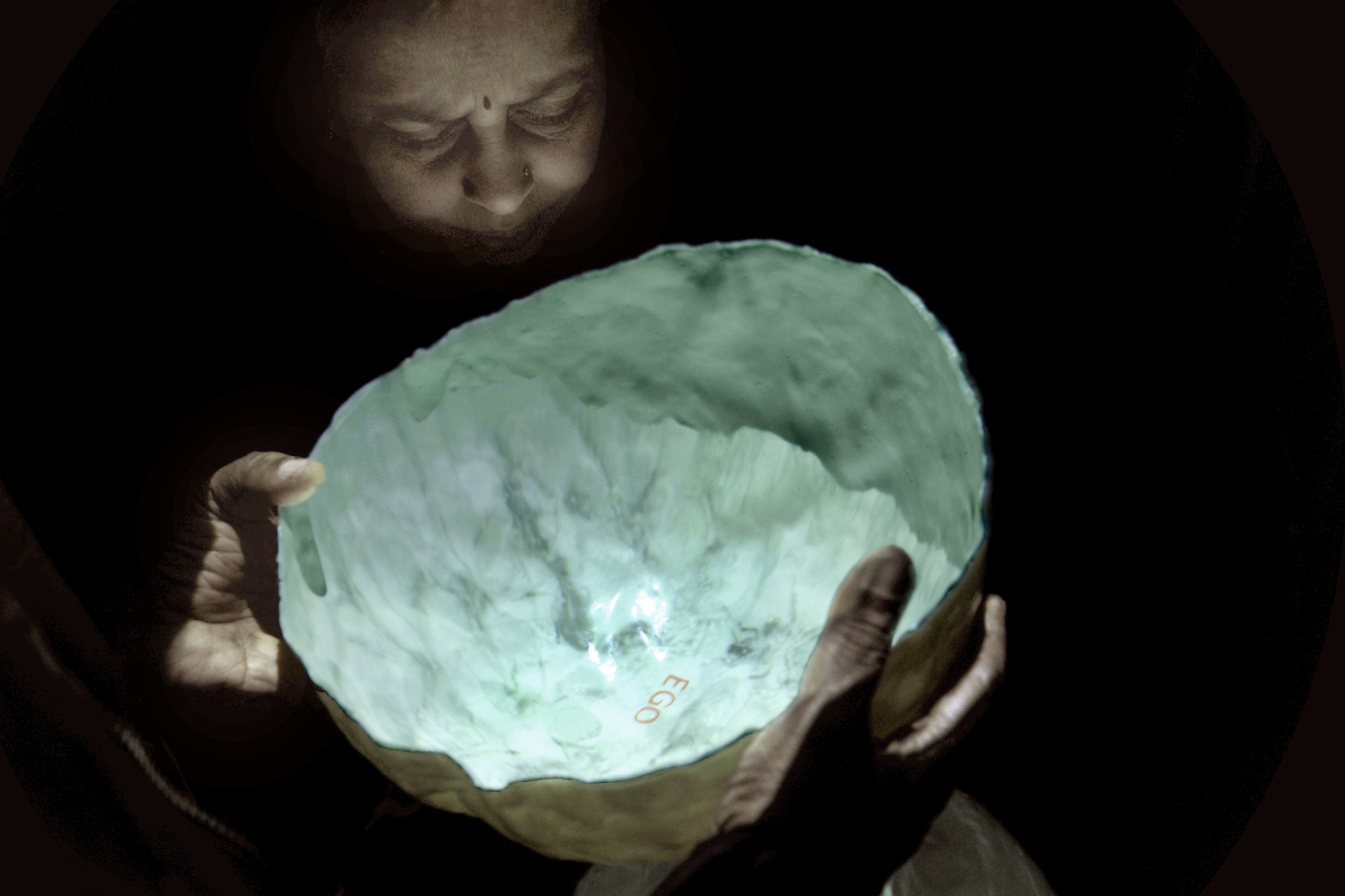review: elisabeth weissensteiner’s ‘mirror brain’

Try as we may (and many intellectuals and creatives alike might), taking a real peek into our subconscious is impossible. By definition, the subconscious is something that lurks beneath the surface of consciousness. If we were to theoretically retrieve whatever’s beneath that surface, it would then be brought to the forefront of our consciousness. Once identifiable, and linked to logical trails of thought, wouldn’t it then become a part of our conscious mental process, and thus cease to be subconscious at all?
This is one of the denser questions attached to Elisabeth Weissensteiner’s interactive installation Mirror Brain, currently showing at Melbourne’s Anna Pappas Gallery. Placing us in a dimmed room lined with fibreglass sculptures of LED-illuminated brains, we’re encouraged to pick up one of two empty bowls in the centre of the room and try to capture the projection reflected in it. All the while, another projection plays overhead on a separate loop.
It’s a complex set-up that intends to provide an immersive experience of human psychology in a way we can consciously perceive and consider. This task may be fundamentally impossible, but that doesn’t mean there’s no value in trying. Dreams, automatic thought process and all things subconscious are successfully brought to the fore as tasty analytical fodder, making us think critically about the way we think.
Appearing as a stream-of-consciousness thought process, the larger overhead projection plays a sequence of merging, seemingly random and sometimes double images. We see babies turn into dinner plates, biological sketches and at one point, the question “where do we come from?” appears in red capital letters before it fades into the successive image. Ideas of our biological origins are key and well-established themes in psychoanalytic theory, and so imbue the installation with the same connotations. We understand the link and thus suspect the work is about the human psyche, and that we’re meant to use that understanding to explore it as a concept.
The fibreglass brains surrounding the space also give Mirror Brain a particularly interesting twist. The symbolism is too direct, too easy; particularly when the main focus of the work seems the evocation of unbridled psychological process. But the glow the brains emit establishes the nature of the space, and stands out from its perimeter as if they’re somehow watching you. They are responsible for an irrefutable part of our overall impression, and so regardless of their symbolic wealth cannot really be considered in isolation from the work as a whole.
Mirror Brain is eerie, clever and incredibly ambitious. Here Weissensteiner treats cognitive process both as something we can engage with as a concept that can be aesthetically represented on a surface level, and as an enigma we’ll never fully know.
Whilst any quest to accurately discover the ‘true’ nature of the subconscious is impossible, it’s important we keep trying to build some kind of understanding of human psychology, however provisional it may be. So long as knowledge and meaning are shared, they can be used as a collective platform to form new ideas and draw new conclusions. Weissensteiner puts us in this critical position and forces us to think in a reflexive way we aren’t sure we understand, but makes us think nonetheless.
Elisabeth Weissensteiner’s ‘Mirror Brain’ is showing at the Anna Pappas Gallery until December 15th 2012
By Monica Karpinski


Pingback: Review: Elizabeth Weissensteiner’s ‘Mirror Brain’ | Monica Karpinski